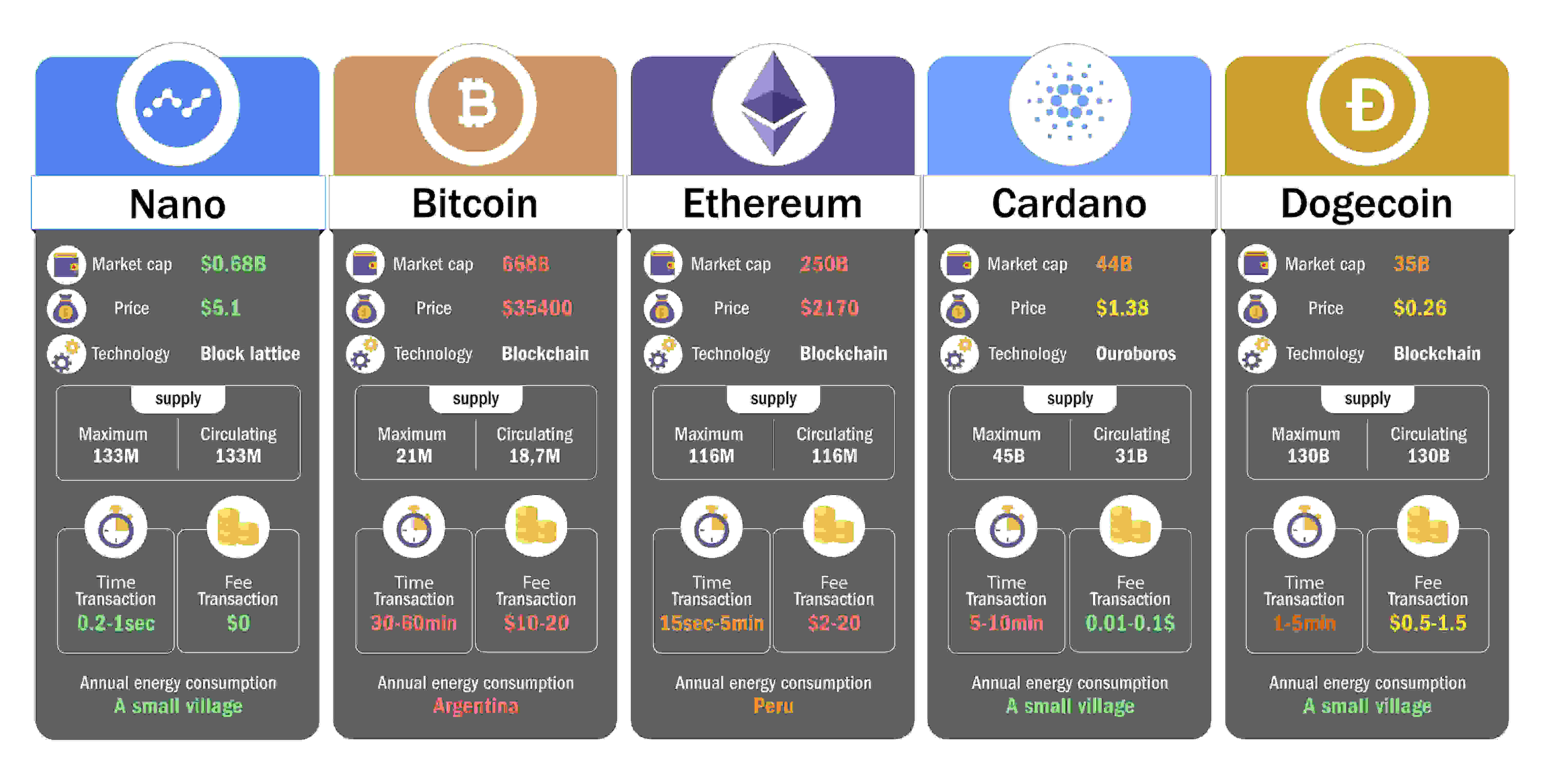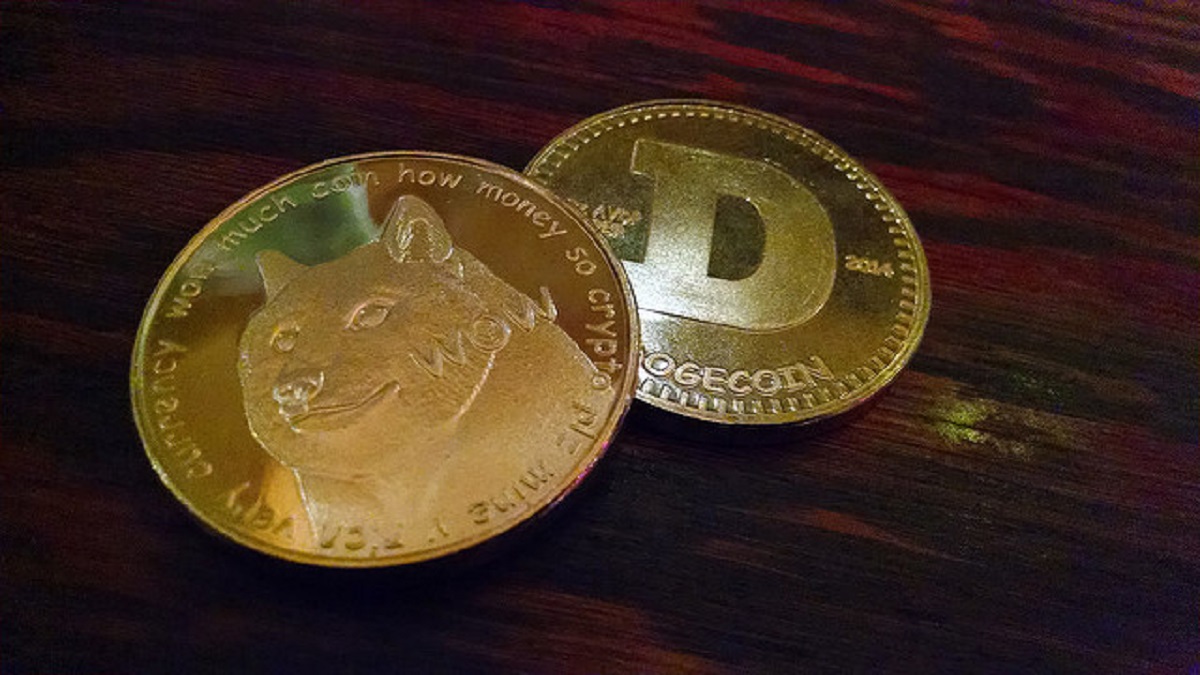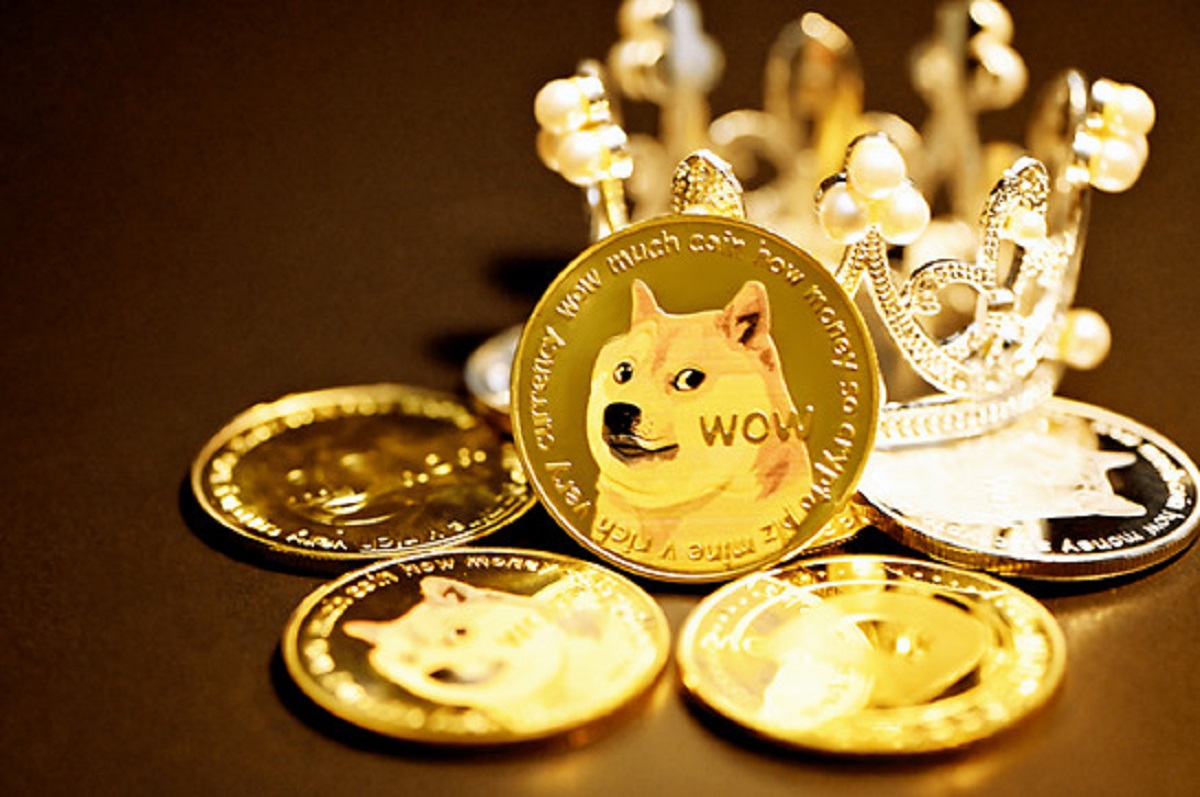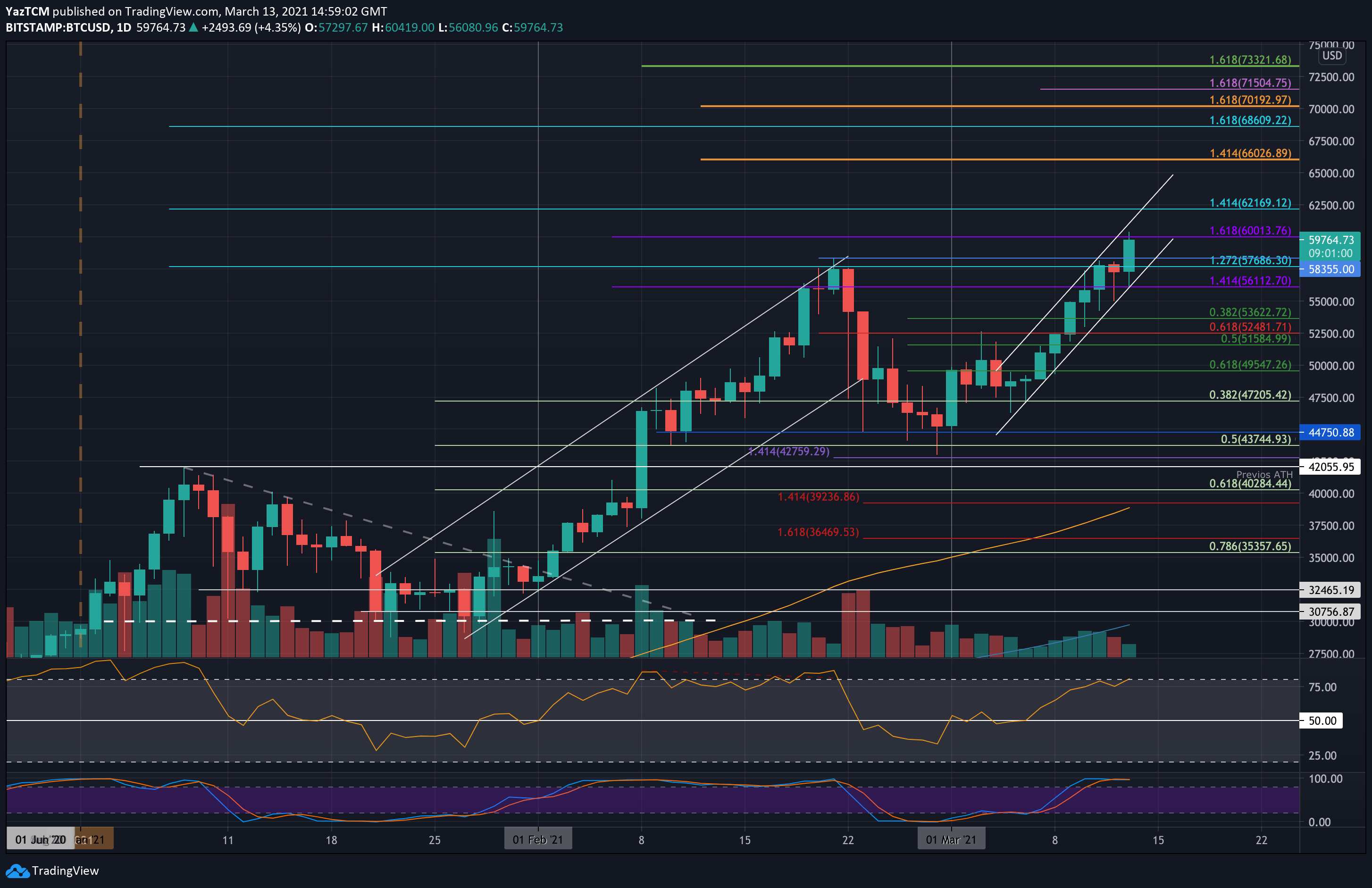Introduction
Investing in cryptocurrencies has become increasingly popular in recent years, with more and more individuals looking to capitalize on the potential gains in this rapidly evolving market. The decentralized nature, high volatility, and potential for significant returns have made cryptocurrencies an attractive investment avenue.
However, with the ever-growing number of cryptocurrencies available, it can be challenging to determine which ones are worthy of investment. In this article, we will discuss some of the top cryptocurrencies to consider investing in during 2021.
Before diving into the specific cryptocurrencies, it’s important to highlight the role of Bitcoin (BTC) in the market. As the pioneer cryptocurrency, Bitcoin continues to dominate both in terms of market capitalization and global recognition. Its limited supply, ongoing institutional adoption, and established infrastructure make it a strong contender for any crypto portfolio.
While Bitcoin holds its position as the leading cryptocurrency, there are other notable contenders that offer unique advantages and potential for growth. These cryptocurrencies are gaining traction and should be considered when diversifying your investment portfolio. Let’s take a closer look at some of them:
Bitcoin (BTC)
Bitcoin (BTC) is the first and most well-known cryptocurrency, created by an anonymous person or group of people called Satoshi Nakamoto in 2009. It operates on a decentralized network known as blockchain, which ensures transparency, security, and immutability of transactions.
Bitcoin has gained considerable mainstream adoption in recent years and is often referred to as digital gold. With a limited supply of 21 million coins, Bitcoin’s scarcity has contributed to its value and appeal as a store of value and potential hedge against inflation.
One of the key reasons behind Bitcoin’s popularity is its decentralized nature, which means no single entity has control over its operations. This aspect ensures that Bitcoin is not subject to government interference or manipulation.
Another factor that makes Bitcoin an attractive investment option is its increasing institutional adoption. Many well-known companies and financial institutions have started to accept Bitcoin as a form of payment or have invested significant sums into Bitcoin. This institutional interest helps to legitimize the cryptocurrency and provides additional stability to its price.
Bitcoin also serves as the gateway to the world of altcoins, as many other cryptocurrencies are exchanged for Bitcoin on various cryptocurrency exchanges. As a result, Bitcoin plays a crucial role in the overall cryptocurrency market and sets the tone for the industry.
To invest in Bitcoin, you can either purchase it directly from a cryptocurrency exchange or invest in Bitcoin-related investment products such as exchange-traded funds (ETFs) or trusts. However, it’s important to note that Bitcoin’s price can be highly volatile, so it’s advisable to do thorough research and consider your risk tolerance before making any investment decisions.
Overall, Bitcoin remains the most prominent cryptocurrency in terms of market capitalization and recognition. Its established infrastructure, growing institutional adoption, and the potential for long-term value appreciation make it a popular choice for crypto investors.
Ethereum (ETH)
Ethereum (ETH) is a decentralized platform that enables the creation and execution of smart contracts and decentralized applications (DApps). Created in 2015 by Vitalik Buterin, Ethereum has become one of the most widely used and respected cryptocurrencies in the market.
Unlike Bitcoin, Ethereum is not solely a digital currency but also a blockchain-based platform that allows developers to build and deploy their own applications. This flexibility and functionality have made Ethereum a favorite among developers and businesses looking to leverage blockchain technology.
The native cryptocurrency of the Ethereum network is Ether (ETH), which is used to facilitate transactions and incentivize participants to validate and secure the network. ETH has become one of the most valuable cryptocurrencies, second only to Bitcoin in terms of market capitalization.
One of the key features of Ethereum is its support for smart contracts. These self-executing contracts are coded on the Ethereum blockchain and automatically execute predefined conditions once certain criteria are met. This opens up a wide range of use cases, such as decentralized finance (DeFi), supply chain management, and digital identity verification.
In addition to its smart contract capabilities, Ethereum has been at the forefront of innovation in the cryptocurrency industry. It introduced the concept of ERC-20 tokens, which has become the standard for creating new tokens on the Ethereum blockchain. This has paved the way for countless Initial Coin Offerings (ICOs) and tokenized projects.
Ethereum also has plans to transition from the current Proof-of-Work (PoW) consensus mechanism to a more energy-efficient Proof-of-Stake (PoS) mechanism called Ethereum 2.0. This upgrade aims to improve scalability, security, and energy consumption, making Ethereum more sustainable and capable of handling a higher volume of transactions.
To invest in Ethereum, you can acquire ETH from various cryptocurrency exchanges and store it in a secure wallet. Additionally, there are investment products and platforms that allow you to gain exposure to Ethereum’s price movements without directly holding the cryptocurrency.
In summary, Ethereum offers a versatile platform for developers to create and deploy decentralized applications and smart contracts. Its widespread adoption, innovative features, and upcoming upgrades position Ethereum as a promising cryptocurrency for investment and further development in the blockchain ecosystem.
Ripple (XRP)
Ripple (XRP) is a digital currency and payment protocol designed for fast, low-cost international money transfers. Created by Ripple Labs in 2012, Ripple aims to enable secure and instant cross-border transactions by eliminating the need for traditional intermediaries, such as banks.
Unlike decentralized cryptocurrencies like Bitcoin and Ethereum, Ripple operates on a more centralized network with a focus on facilitating efficient payments. It uses a consensus algorithm called the Ripple Protocol Consensus Algorithm (RPCA) to validate transactions and maintain the integrity of its network.
Ripple’s native currency, XRP, plays a crucial role in the protocol by acting as a bridge currency for facilitating transfers between different fiat currencies. It provides liquidity and reduces the costs and time associated with traditional remittances.
Ripple has gained significant attention and partnerships with financial institutions around the world, making it a compelling investment option. Its blockchain-based solution offers faster settlement times and lower transaction fees compared to traditional payment systems, which has led to increased adoption by banks, remittance providers, and payment processors.
However, it’s important to note that Ripple has faced regulatory challenges, particularly in the United States. The U.S. Securities and Exchange Commission (SEC) filed a lawsuit against Ripple Labs, alleging that XRP was an unregistered security. This legal battle has impacted the market perception of Ripple and caused fluctuations in XRP’s value.
Investing in Ripple can be done by purchasing XRP from various cryptocurrency exchanges. It’s essential to stay informed about regulatory developments and any updates regarding the SEC lawsuit, as they can have a significant impact on Ripple’s future prospects.
While it’s important to consider the potential returns and partnerships associated with Ripple, it’s equally crucial to assess the regulatory risks and uncertainties surrounding the cryptocurrency. Conduct thorough research and consult with a financial advisor to make informed investment decisions.
In summary, Ripple aims to revolutionize cross-border payments by providing fast and cost-effective solutions. Despite ongoing regulatory challenges, Ripple continues to garner partnerships with financial institutions worldwide. It’s essential to closely monitor the developments and regulatory landscape surrounding Ripple to assess its investment potential.
Litecoin (LTC)
Litecoin (LTC) is a peer-to-peer cryptocurrency that was created in 2011 by Charlie Lee, a former Google engineer. Often referred to as the “silver” to Bitcoin’s “gold,” Litecoin offers a faster block generation time and a different hashing algorithm, making it more efficient for everyday transactions.
One of the key features of Litecoin is its faster block confirmation time, which means transactions can be validated more quickly compared to Bitcoin. This makes Litecoin a viable option for those who value speedy transactions and lower fees.
Litecoin operates on a decentralized network similar to Bitcoin and utilizes the Scrypt algorithm for mining, which requires less computational power compared to Bitcoin’s SHA-256 algorithm. As a result, mining Litecoin is more accessible to a broader range of individuals and provides a more decentralized mining landscape.
Litecoin has gained significant popularity and has been widely adopted by merchants as a form of payment. Its accessibility and user-friendly nature make it an attractive option for everyday transactions.
Another notable aspect of Litecoin is its active development community and the involvement of its creator, Charlie Lee. The continuous development and improvements to the Litecoin network ensure that it remains competitive and relevant in the cryptocurrency market.
When considering investing in Litecoin, it’s important to understand that its value is closely tied to the overall cryptocurrency market sentiment, particularly Bitcoin. Litecoin often experiences price fluctuations that mirror those of Bitcoin, although not necessarily to the same extent.
To invest in Litecoin, you can purchase LTC directly from cryptocurrency exchanges and store them in a secure wallet. Additionally, some investment platforms offer Litecoin-focused investment products for those looking to gain exposure to the cryptocurrency without directly holding it.
While Litecoin offers several advantages over Bitcoin in terms of transaction speed and cost, it’s important to conduct thorough research and consider your investment goals and risk tolerance before investing in any cryptocurrency.
In summary, Litecoin is a popular and accessible cryptocurrency that offers faster transaction confirmation times and lower fees compared to Bitcoin. Its active development community and continuous improvements make it an appealing investment option for individuals seeking an alternative to Bitcoin.
Cardano (ADA)
Cardano (ADA) is a blockchain platform that aims to provide a secure and sustainable infrastructure for the development of decentralized applications and smart contracts. Founded by Charles Hoskinson, one of the co-founders of Ethereum, Cardano aims to address the scalability and sustainability issues faced by many existing blockchain protocols.
One of the key features of Cardano is its rigorous scientific approach to development and its focus on peer-reviewed research. The project prioritizes security, scalability, and interoperability, making it an attractive choice for businesses and developers looking to build on a robust and reliable platform.
Cardano utilizes a unique proof-of-stake (PoS) consensus mechanism called Ouroboros, which aims to be more energy-efficient and secure compared to traditional proof-of-work (PoW) mechanisms. This enables Cardano to process transactions with greater speed and efficiency while minimizing its environmental impact.
The platform is divided into two layers: the Cardano Settlement Layer (CSL) and the Cardano Computation Layer (CCL). The CSL handles the transfer of ADA, the native cryptocurrency of the Cardano network, while the CCL focuses on executing smart contracts and decentralized applications.
Cardano’s approach to governance is also noteworthy. It employs a treasury system that allows ADA holders to vote on proposals and fund development projects. This decentralized governance model ensures community participation and transparency in decision-making processes.
Investing in Cardano translates to acquiring ADA tokens, which can be done through various cryptocurrency exchanges. ADA can be stored in a compatible wallet, which provides control and security over one’s assets.
It is important to note that Cardano is still in its early stages, with ongoing development and planned upgrades. This means that investing in Cardano comes with inherent risks and uncertainties. However, the team’s commitment to scientific research and continuous improvement gives the project strong potential for long-term success.
In summary, Cardano is a blockchain platform that focuses on scalability, sustainability, and rigorous scientific research. Its unique consensus mechanism, Ouroboros, and layered architecture set it apart from other blockchain protocols. As with any investment, it’s crucial to carefully evaluate the project’s progress and consider the risks associated with investing in a developing cryptocurrency like Cardano.
Polkadot (DOT)
Polkadot (DOT) is a multi-chain platform that aims to enable the interoperability and scalability of different blockchain networks. Developed by Gavin Wood, one of the co-founders of Ethereum, Polkadot seeks to overcome the limitations faced by existing standalone blockchains by allowing them to connect and communicate with each other.
At its core, Polkadot operates as a heterogeneous multi-chain framework, where multiple chains, called parachains, exist in parallel. These parachains can be customized to serve specific purposes, such as handling smart contracts, identity verification, or decentralized finance.
Polkadot’s ability to connect different blockchains and enable the transfer of assets and data between them opens up new possibilities for cross-chain applications and collaborations. This interoperability feature distinguishes Polkadot from many other blockchain platforms in the market.
In addition, Polkadot’s design includes a shared security model called the Relay Chain, which provides a high level of security for all the connected parachains. This makes Polkadot an attractive option for developers and businesses seeking a more secure and scalable infrastructure for their blockchain projects.
Furthermore, Polkadot uses a nominated proof-of-stake (NPoS) consensus mechanism to secure its network. Validators are chosen through a staking process, where DOT holders have the ability to nominate and vote for validators. This ensures decentralization and community participation in the network’s governance.
Investing in Polkadot involves acquiring DOT tokens, which have multiple utilities within the ecosystem. DOT holders can participate in governance decisions, stake their tokens to secure the network, and potentially receive rewards in return.
It is worth noting that Polkadot is still a relatively new project, and the full potential of its interoperability framework is yet to be realized. As with any investment, there are risks involved, including regulatory uncertainties and technological challenges.
However, Polkadot’s innovative approach to blockchain interoperability, its robust security measures, and the active development community behind it make it an exciting option for investors looking to diversify their cryptocurrency portfolios.
In summary, Polkadot is a multi-chain platform that aims to enable the interoperability and scalability of blockchain networks. Its unique design, shared security model, and nomination-based consensus mechanism set it apart from other blockchain platforms. As the project continues to evolve, it’s important for investors to closely monitor its progress and assess the opportunities and risks associated with investing in Polkadot.
Chainlink (LINK)
Chainlink (LINK) is a decentralized oracle network that aims to bridge the gap between smart contracts on the blockchain and real-world data sources. Created by Sergey Nazarov and Steve Ellis in 2017, Chainlink provides a reliable and secure way to connect smart contracts with external data, APIs, and off-chain systems.
Smart contracts, which are self-executing contracts on the blockchain, are limited in their ability to access and integrate with real-time and real-world data. Chainlink solves this problem by acting as a decentralized middleware that enables smart contracts to interact with various data sources and external APIs.
The heart of Chainlink is its network of oracles, which are responsible for fetching and verifying external data and feeding it into the smart contracts. Oracles in the Chainlink network are incentivized through LINK tokens, the native cryptocurrency of the Chainlink ecosystem.
Chainlink offers a tamper-proof and trustworthy solution to the “oracle problem,” ensuring that the data provided to smart contracts is reliable and accurate. This opens up a wide range of use cases, including decentralized finance (DeFi), insurance, gaming, supply chain management, and more.
One of the notable aspects of Chainlink is its growing ecosystem and collaborations with various blockchain platforms and enterprises. It has integrated with major blockchain networks like Ethereum and has partnerships with reputable companies such as Google, Oracle, and SWIFT.
Investing in Chainlink involves acquiring LINK tokens, which can be done through various cryptocurrency exchanges. Holding LINK tokens allows individuals to participate in the Chainlink network by staking their tokens, thus contributing to the security and reliability of the oracle network.
It’s important to note that the success of Chainlink is closely tied to the adoption and use of its oracle technology. As the demand for smart contracts that rely on real-world data increases, Chainlink could see further growth and appreciation in value.
However, like any cryptocurrency investment, it’s crucial to conduct thorough research and understand the risks involved. Chainlink’s price can be volatile, and market conditions, regulatory changes, and technological advancements can impact its performance.
In summary, Chainlink provides a decentralized oracle network that connects smart contracts with real-world data sources. Its secure and reliable infrastructure makes it a vital component in the broader blockchain ecosystem. As adoption of smart contracts continues to expand, Chainlink’s role in facilitating seamless integration with external data sources positions it as a promising investment option.
Stellar (XLM)
Stellar (XLM) is an open-source blockchain platform designed for fast, low-cost, and cross-border transactions. Launched in 2014 by Jed McCaleb, co-founder of Ripple, Stellar aims to facilitate seamless transfers of value and enable financial inclusion for individuals and businesses worldwide.
Stellar’s main focus is serving as a decentralized network for facilitating international remittances and cross-border payments. It aims to bridge the gap between various financial institutions and enable them to exchange currencies quickly, securely, and at a low cost.
The Stellar network utilizes its native cryptocurrency, Lumens (XLM), as a means of conducting transactions and preventing spam on the network. Lumens can also act as a bridge asset, allowing users to convert and transfer between different currencies seamlessly.
One of the key features of Stellar is its consensus mechanism, which is based on the Federated Byzantine Agreement (FBA). This unique consensus protocol allows for fast and secure transaction confirmation, making Stellar an efficient and scalable blockchain platform.
Stellar has gained recognition and partnerships with various organizations and companies, including IBM, which uses Stellar’s technology for their cross-border payment solution, IBM World Wire. These partnerships contribute to the growth and adoption of Stellar as a reliable platform for global transactions.
Another important aspect of Stellar is its focus on financial inclusion. The platform aims to provide affordable financial services to individuals without access to traditional banking systems. By leveraging blockchain technology, Stellar enables individuals in underserved areas to have access to savings, loans, and other financial services.
To invest in Stellar, you can acquire XLM tokens from cryptocurrency exchanges and store them securely in a compatible wallet. Additionally, there are investment platforms that offer products and services to gain exposure to Stellar’s potential price movements.
It’s crucial to keep in mind that the cryptocurrency market is highly volatile and subject to various factors such as regulatory changes and market sentiment. Therefore, thorough research and consideration of your investment goals and risk tolerance are essential when investing in Stellar or any cryptocurrency.
In summary, Stellar is a blockchain platform that aims to facilitate fast, low-cost, and cross-border transactions. Its focus on financial inclusion and partnerships with reputable organizations make it an attractive option for individuals and businesses seeking efficient and inclusive financial services. As the adoption of blockchain technology continues to grow, Stellar’s potential for further development and adoption makes it an interesting choice for investment.
Conclusion
As we’ve explored in this article, there are several cryptocurrencies worth considering for investment in 2021. While Bitcoin remains the leading cryptocurrency and a solid investment choice, other cryptocurrencies offer unique features and potential for growth.
Ethereum, with its smart contract capabilities and active development community, continues to be a strong contender in the market. Ripple aims to revolutionize cross-border payments, while Litecoin provides faster transaction confirmations and lower fees compared to Bitcoin.
Cardano and Polkadot offer innovative solutions to scalability and interoperability issues in the blockchain space, while Chainlink bridges the gap between smart contracts and real-world data. Stellar, with its focus on cross-border transactions and financial inclusion, presents an enticing investment opportunity.
It’s important to note that investing in cryptocurrencies carries risks, and market conditions can be volatile. It’s advisable to conduct thorough research, stay updated on industry news, and seek professional advice before making any investment decisions.
Furthermore, diversification is key when expanding your cryptocurrency portfolio. Investing in a mix of established cryptocurrencies like Bitcoin and Ethereum, as well as promising up-and-coming projects, can help mitigate risks and maximize your potential for returns.
Always remember to assess your own risk tolerance and investment goals before entering the cryptocurrency market. And as with any investment, it’s crucial to stay informed, monitor your investments, and make adjustments as necessary.
By carefully considering the potential of different cryptocurrencies and staying abreast of market trends, you can position yourself for potential opportunities and navigate the ever-evolving landscape of the cryptocurrency market.

























